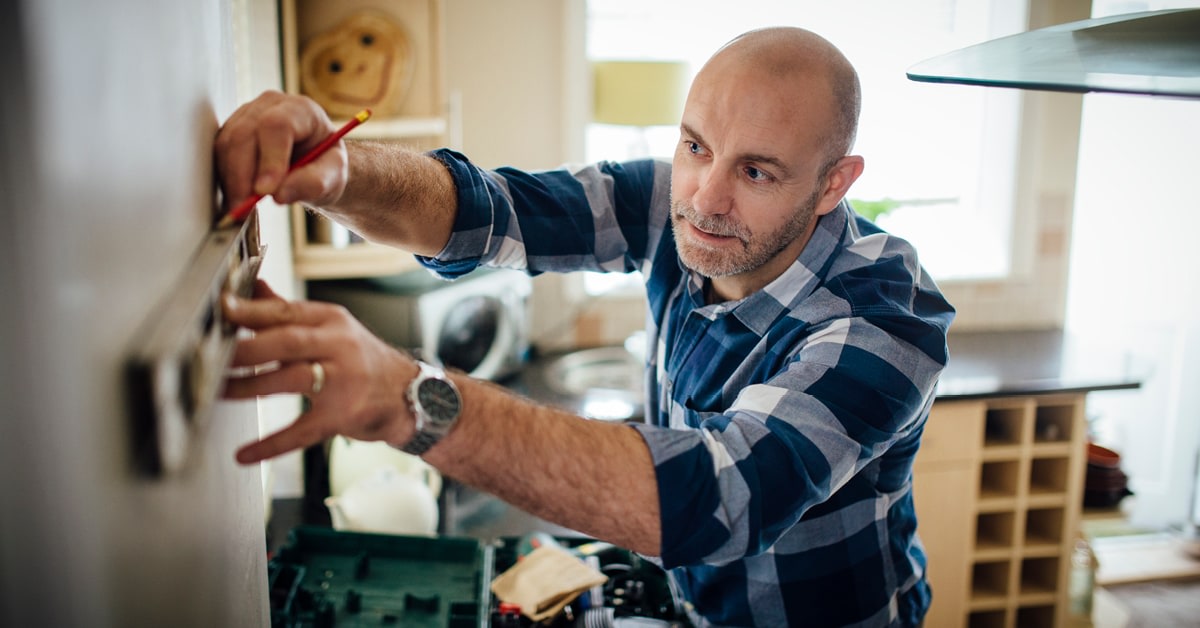How Much Should You Save for Home Improvements?

Making the leap into homeownership is incredibly exciting – having a place to call your own brings with it a new level of responsibility and pride. It also gives you the chance to tackle some home improvement projects, from small do-it-yourself projects, like painting, to larger ventures, like remodeling a bathroom. But home improvement comes at a cost, so it’s a good idea to establish a budget or a savings plan to comfortably fund these projects.
Determining wants vs. needs
From the start, you’ll want to separate out your home improvement wants and needs so you can prioritize the order in which you complete projects. When we bought our current home, one of the first things we did was make a detailed list of projects we’d like to do, room by room. It’s helped us stay on track with the more urgent ‘needs’ and then saving the ‘wants’ for rainy day projects.
Calculate the projects ROI's
Once you’ve organized your wants and needs, you may want to take it a step further by determining the ROI (return on investment) of certain projects. You can consult a real estate agent or even do your own research to gather ballpark figures. You may desire to completely gut your kitchen and start fresh, but if you plan to move in two years, will you recoup the amount you put into the project?
If the answer is no, you may want to consider DIY improvements like painting the cabinets or put up removable backsplash to give it a new look without sinking much money into the project.
On the other hand, if it’s your ‘forever’ home, completing a big project is more for your long-term enjoyment and less about ensuring you get out what you put in money-wise.
Generally speaking, projects like kitchen or bathroom renovations will give you the greatest return and may be easier to justify even if you aren’t planning to live there long-term. However, in some cases, being satisfied with your living conditions is greater than ROI, so don’t be afraid to complete projects if you know it’ll bring you joy.
Make a budget
Once you’ve prioritized your home improvement projects, it’s time to make a budget or at least estimate how much you should save each month. The truth is, there’s no ‘right’ amount of money to save for home projects. It will ultimately depend on what you really want or need in your home. However, there are two methods you can use to help come up with a number:
Method 1: Set aside 2% of the assessed value of your home and land each year, divided into a monthly savings amount.
Method 2: Research and estimate the cost of each home improvement project you intend to complete during the year, add them up and then divide the total into monthly installments.
As you can imagine, determining how much to save is very subjective and will be based on the type of projects you intend to complete.
Factor in the other 1%
One topic we haven’t really touched on yet is the fact you should also be saving for unexpected home repairs – things like a faulty dishwasher, a leaking pipe or a broken HVAC unit.
For ongoing maintenance, there is a popular rule of thumb – to set aside 1% of the purchase price of your home.
If you paid $200,000 for your house, expect to set aside an additional $2,000 to cover repairs that may pop up throughout the year due to wear and tear or unexpected failure.
Build your savings
Okay, so you’ve done your homework and determined how much you should be saving each month for improvements and repairs – now what? If you’re like most people, you may be wondering where you’ll find the extra money in your budget. Fortunately, there are some tactics you can use to start saving for projects right away – such as:
Set aside your tax return or annual bonus. If you find it hard to set aside a big chunk of money from your monthly income, slip the additional money you receive from a tax refund or bonus directly into a savings account – out of sight, out of mind!
Cut the cable cord. Nowadays, it’s easier than ever to watch your favorite shows and discover new ones without becoming indebted to your cable company. Choose a subscription service like Netflix or Sling TV and slash your TV expenses by at least half.
Meal prep at home. Getting takeout for lunch and grabbing a cup of joe from your favorite coffee shop comes at a price – try your hand at packing your lunch and brewing coffee at home before heading to work to save big.
Consume less energy. Turn off lights when you leave a room, lower the thermostat, and decrease the temperature of your hot water heater.
Making small changes to save money can add up quickly, so you’ll be on your way to completing home improvements in no time. It’s also worth noting that home projects you invest in can yield significant savings over the years, like installing energy-efficient windows, adding solar panels to your roof and replacing outdated appliances with new Energy Star ones. Owning a home is one of the most significant investments you’ll make in your life, so keeping it in tip-top shape is very important for your enjoyment as well as for the ability to increase resale value down the road.